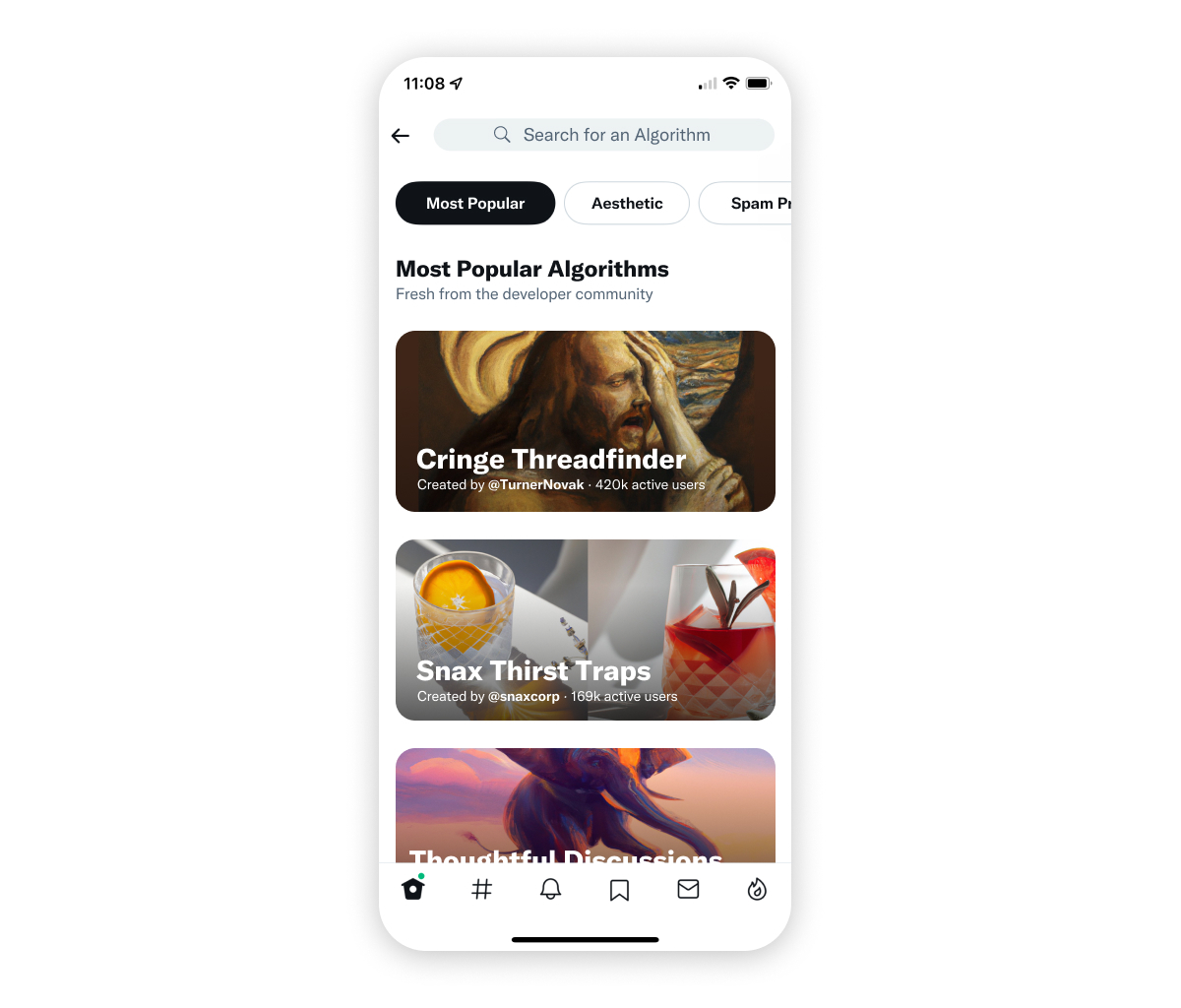
Sponsored By: Fundrise
You don’t have to be IN real estate to invest in it. Fundrise is an easy-to-use platform that lets you build, grow and manage a diversified portfolio of high-end private real estate projects across the US. These are the same types of investments that power the largest pension funds, endowments and sovereign wealth funds.
Fundrise offers significantly deeper diversification and outsized performance potential — a true alternative to any public market asset. They have become America’s largest direct-to-investor real estate platform by digitizing, automating and integrating almost every aspect of the private investment industry in order to maximize your long-term return potential.
With Fundrise, you can achieve true portfolio diversification at the touch of a button. Find out how 210,000+ investors from all sizes are diversifying their portfolios with our private real estate investments.
1
The main character on Twitter this week, yet again, is Twitter itself.
As everybody knows, Elon Musk wants to buy the company, and one of the ideas he’s pushing is to open-source the algorithm that decides how tweets are ranked in all of our timelines. Whether or not the sale goes through (seems unlikely), I actually think this is a great idea. In fact I would go further and argue Twitter should not only open-source their algorithm so we can all see how it works, I think they should create an open marketplace for algorithms where anyone can build their own, and use algorithms created by others.
For example I’d want to try an algorithm that attempts to prioritize nuanced conversations about important topics. Maybe someone else would want algorithms to find mind-expanding threads, savage dunks, or thirst traps of hot new snax.
Here’s how it could look:
(The background images I used for the algorithms are credit to some cool people playing with DALL·E 2 on Twitter!)
Would this transform society? No. Would it “unlock Twitter’s true potential”? Probably not, tbh.
But I do think it would be a solid step towards making Twitter a better and more fun place for everyone, and I think it could rebuild some marginal trust in Twitter as an institution, by demanding less of it. It would give more control to users, and move Twitter back towards its pirate roots of operating more like an open protocol, while still protecting against the downsides of full decentralization.
I’ve been fascinated with this idea for a couple years now:
At first glance opening the algorithm to transparency and choice might seem far-fetched, but then again, a few weeks ago the guy who invented Twitter said he is also into the idea! (Close observers may note the connection here to Bluesky, a private entity funded by Twitter to build an open social networking protocol.) So perhaps there is hope?
Whether you love or hate Elon Musk, and regardless of your position on the ‘free speech’ vs ‘safety from abuse’ debate, I think the idea of a marketplace for algorithms should be taken more seriously. There are two main advantages. First, from a purely commercial and self-interested perspective, opening up their algorithms to transparency and choice will help Twitter scale by strengthening their network effect. Second, from a societal point of view, this would be a meaningful step towards rebuilding trust, which is at an all-time low.
Let’s begin by looking at what’s in it for Twitter.
The Only Subscription
You Need to
Stay at the
Edge of AI
The essential toolkit for those shaping the future
"This might be the best value you
can get from an AI subscription."
- Jay S.
Join 100,000+ leaders, builders, and innovators

Email address
Already have an account? Sign in
What is included in a subscription?
Daily insights from AI pioneers + early access to powerful AI tools










Comments
Don't have an account? Sign up!
You know who really, deeply cares about algorithms?
- Spammers
- And even more hardcore bad actors
With algorithms 100% public, these folks would be both emboldened and largely enabled to manipulate what folks see on Twitter.
So while I'm intrigued by the idea of "choose your algorithm," I'm less optimistic about the radical transparency aspect of your suggestion.
Aside: What Twitter really needs, IMHO, is two things:
1) A "Pinned update" option, to enable folks to subsequently make a correction, add nuance, or issue a critical update to a currently-or-potentially viral tweet of theirs. This would substantially reduce both disinfo AND toxic/unfair pile-ons.
2) And -- for the heretical suggestion -- Twitter needs to transition the 280-char-max-per-tweet to 280-char-max VISIBLE per tweet, with a click to expand.
This would provide multiple huge improvements in Twitter usability, including...
- Hopefully doing away with the tweet-GIF, which is both horrible on mobile and offensively bad from an accessibility perspective.
- It'd allow people to more efficiently write -- and more nicely present -- a more detailed and nuance set of thoughts vs. having their tweet-storm potentially chopped up, retweeted out of context, etc.
(of course, in my dreamworld, folks would be prompted to "USE/START A BLOG!" after xxxx characters :-)
@adam_2098 yes. There are many reasons why Google, FB, and Twitter haven't made their algorithms public, spam being a key one.
I've summarized my thoughts (and the research) on Elon Musk/Twitter here:
https://justinjackson.ca/elon-musk-and-free-speech
z